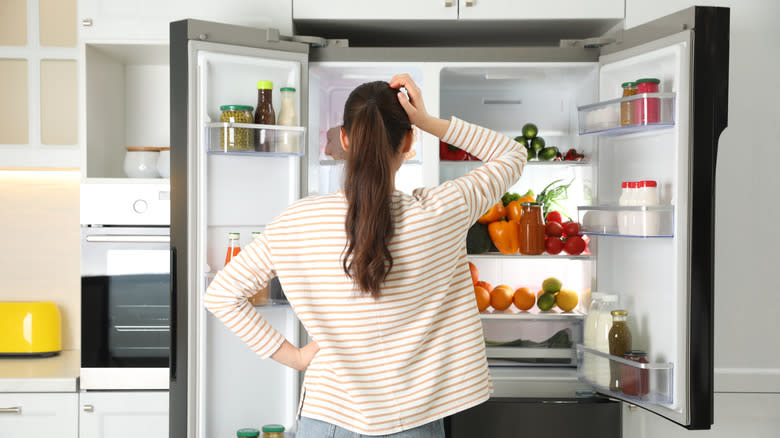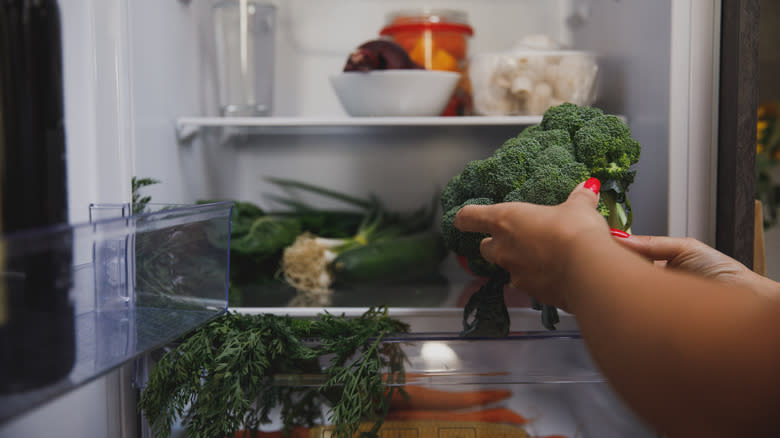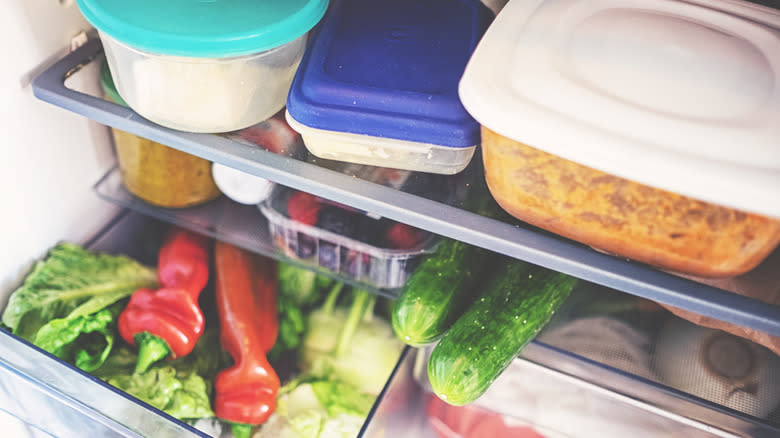The Fridge Organization Hack To Prevent Excess Food Waste

Sometimes ingredients can go bad before you have the chance to use them in a recipe, and other times you'll discover them rotting in the back of your fridge. If you often find yourself throwing away food simply because you forgot you had it, it might be time to reorganize your fridge. Typically people sort their food into categories, for example, they might store all the vegetables in the crisper drawer, or put all the cheese in one place. While that organization system has its benefits, if reducing food waste is your main concern, consider taking the "FIFO" approach instead.
FIFO, which is an acronym for "first in, first out," is a method commonly taught in culinary school, and it entails sorting your food by expiration date, not necessarily by its type. Essentially, items that have a longer shelf life or that have been recently bought are positioned towards the back. Older items or anything with an upcoming expiration date are placed closer to the front. This encourages you to use up food long before it goes bad so it doesn't go to waste.
Read more: The Best Way To Clean That Nasty Grease Off Of Your Kitchen Cabinets
The Best Way To FIFO Your Fridge

If your fridge is completely disorganized, the idea of putting everything in order by shelf life or freshness might seem like a daunting task, but it's actually easier than you might think. The best way to go about it, shared TikToker @domesticblisters, is to start by switching the spots for the condiments and the produce. Instead of putting your condiments in the fridge door, store them in the crisper drawers. Since fruits and veggies wilt and rot faster than condiments, it's more important for these items to be visible and accessible.
Snacks, leftovers, and any other pre-made food can be kept on the upper and middle shelves, but the older they are the closer to the front they should be. The same rule applies to beverages and packed foods that have an actual expiration date printed on them. If you're worried about everything getting jumbled together, consider investing in separate containers. This is especially beneficial for produce because certain fruits and vegetables -- including avocados, tomatoes, and peppers -- produce ethylene, a gas that can accelerate the ripening (and rotting) of other produce in close proximity.
Keeping Your Fridge Organized

One thing you need to keep in mind about the FIFO organization system is that it requires constant upkeep. Every time you go grocery shopping, you can't just put food wherever you find space in the fridge. You'll actually have to rotate things and potentially do some reorganizing or discarding any time something new gets put in.
Considering not everything comes with an expiration label, it can be hard to keep track of the freshness of food or exactly when you bought it. To simplify this, label everything with the date that you put it in the fridge, and the date you need to use it by. As a rule of thumb, prepared food or leftovers should generally be consumed within seven days. Other recommended refrigeration times can be found on the USDA website. Ultimately, this organization technique demands a bit more effort, but it will definitely reduce food waste in the long run.
Read the original article on Daily Meal.

